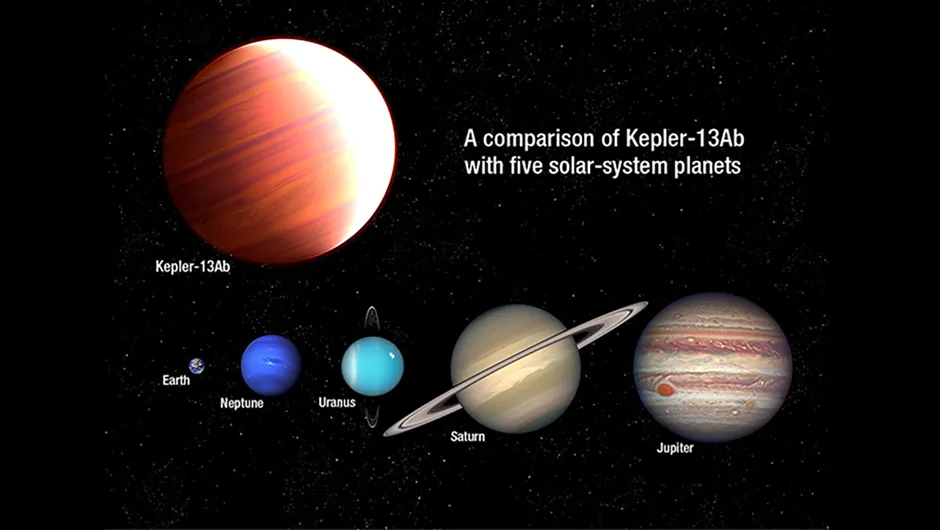Exoplanet scientists have discovered a ‘hot Jupiter’ about 1,730 lightyears from Earth that snows titanium dioxide, a main ingredient found in suntan lotion.
The hot Jupiter - so-called because it is similar in size to Jupiter but much closer to its host star - is known as Kepler-13Ab.
The host star Kepler-13A is part of a multi-star system including star Kepler-13B, and dwarf star Kepler 13C.
The exoplanet is tidally locked, which means the same side always faces its host star, just like the Moon around Earth.
On its dayside, temperatures can reach as high as 2,700°C.
Kepler-13Ab only experiences the sunscreen snow on its darker side. Scientists studying the exoplanet suggest that winds carry titanium oxide gas to the colder nighttime side, where it condenses, forms as clouds and falls as snow.
The planet’s surface gravity is six times greater than Jupiter’s, which pulls the titanium oxide snow out of the upper atmosphere and traps it in the lower atmosphere.

The scientists behind the study found that Kepler-13Ab's atmosphere is cooler at higher altitudes; contrary to what was expected.
They inferred that a light-absorbing, gaseous form of titanium oxide was missing from the planet’s atmosphere on its dayside.
This causes the atmospheric temperature to grow colder at higher altitudes, whereas for hot Jupiters like this, the opposite would be expected.
The study is one of many seeking to learn more about exoplanets and their weather systems.
By studying star systems beyond our own, astronomers hope to get a broader idea of the characteristics of the Universe.
"In many ways, the atmospheric studies we're doing on hot Jupiters now are testbeds for how we're going to do atmospheric studies on terrestrial, Earth-like planets," says lead researcher Thomas Beatty of Pennsylvania State University.
"Hot Jupiters provide us with the best views of what climates on other worlds are like.
Understanding the atmospheres on these planets and how they work, which is not understood in detail, will help us when we study these smaller planets that are harder to see and have more complicated features in their atmospheres."
